Fencing & Gates
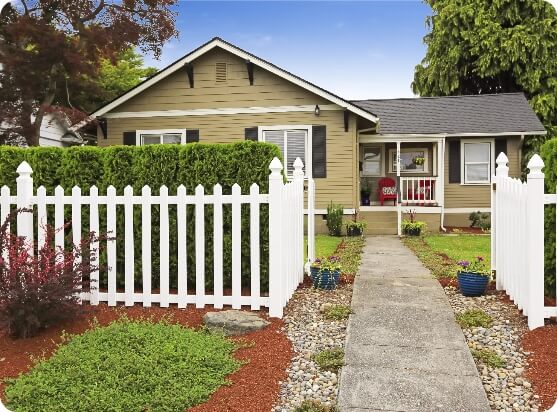
Fencing
Choosing the right fence can seem overwhelming. To make it easier, we have outlined all the information you need to ensure you can make an informed decision and get the fence of your dreams.
There are many types of fencing options to choose from. The first step is to determine your budget and factor in the amount of privacy or security you are looking for in a fence, The rest will fall into place.
Fencing & Gates
Benefits of Fencing
While a fence’s primary function is to provide security and define property boundaries, there are a range of other benefits.
Safety
A high quality fence is one of the best ways to ensure the safety of your family, children and pets because it will help deter them from journeying outside of its boundaries.
Security
A high quality fence can help prevent potential unwanted intruders from accessing your property. Many homeowners looking for added security/privacy and visual appeal opt to install a driveway gate.
Curb Appeal
A beautiful fence can enhance and complement the overall look of your home by adding depth and form to your property.
Increased Property Value
A great fence can increase your home’s value and make it more attractive to potential buyers.
Potential Lower Insurance Premiums
The benefits of added safety and security offers the potential to lower your insurance premium. Every policy is different, so it’s important to review your existing policy or to contact your insurance broker first.
Versatility
A fence doesn’t necessarily have to be installed on the perimeter of your property. Because there are so many different options available, many homeowners install fencing around their decks, patios and pools.
Landscaping
A high quality fence can protect your landscaping from foot traffic as it creates a barrier for entry and exit.
Wildlife Deterrent
A good fence will help deter wildlife (such as deer and bear) from entering your yard.
Types Of Fencing
While there are many types of fencing available, all fences generally fall into one or a combination of three categories: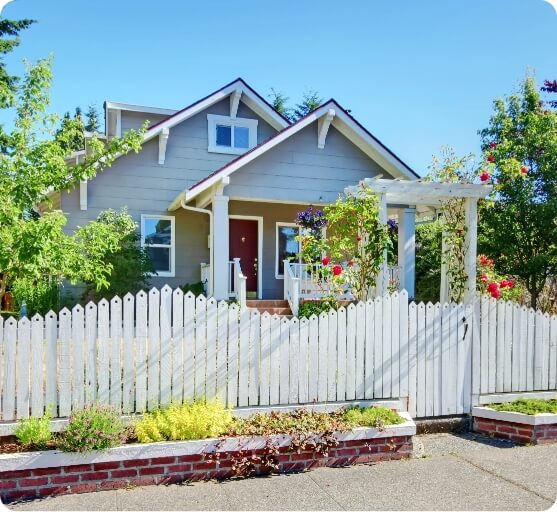
Privacy: Depending on your needs, privacy fencing can be completely solid or partially solid. Either way, a privacy fence is a great way to keep your outdoor space separate from neighboring properties and provide security for your children and pets.
In general, privacy fences are installed in the back and/or sides of a home, and must comply with local zoning height restrictions.
Functional: As the name suggests, functional fences have a specific purpose (such as a pool fence).
Decorative: Decorative fences don’t necessarily have a specific purpose. They are primarily built for aesthetics and to complement a home or property.
Honey Do Men offers a full selection of fences using the highest quality fencing materials to complement your home, fit within your budget and most importantly, work with you to ensure that you get everything you are looking for in a fence.
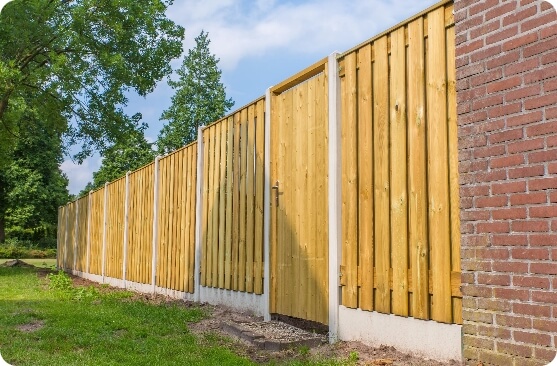
Board And Batten Fencing
A full privacy fence built with deliberate space between the backboards, and is overlaid with a “batten board” to create a private fence panel. Considered the top of the line privacy fence, a board and batten fence can also be installed on any property grade.
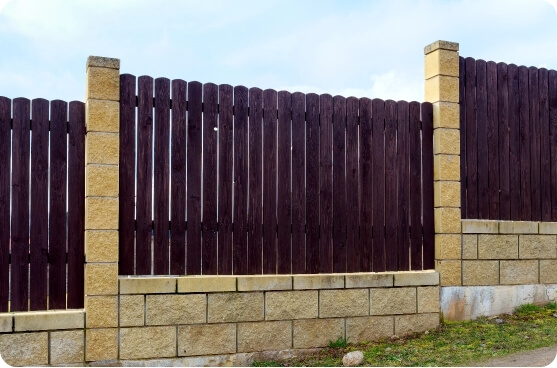
Board On Board (‘Good Neighbor’) Fencing
Board on board fences are also called ‘Good Neighbor’ fences because both sides of the fence are identical. A semi-private fence, board on board fences also offer a myriad of customization options.
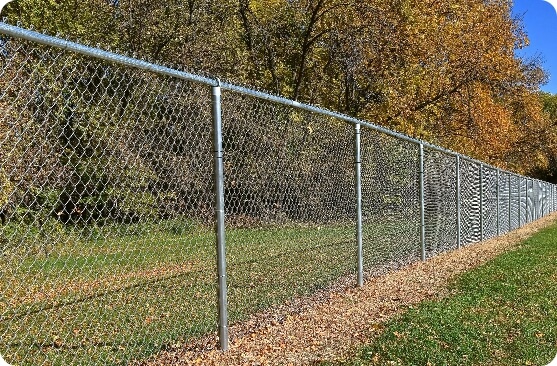
Chain Link Fencing
Universally known for its practicality and durability, a chain link fence is a great way to delineate a border while performing the most basic needs of a fence. As the name suggests, chain link fences consist of galvanized steel posts, rails and mesh metal fabric and are available in varying heights that can be customized to your specific needs.
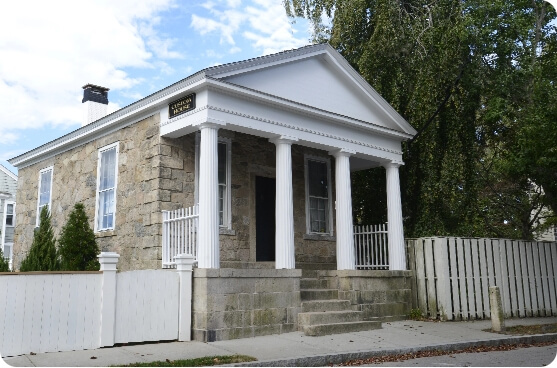
Custom Fencing
Homeowners looking for a fence that doesn’t fit into a specific category often opt for a custom fence to create a unique, personal touch. A custom fence can be made with any fencing material, and with varying combinations of styles and designs.
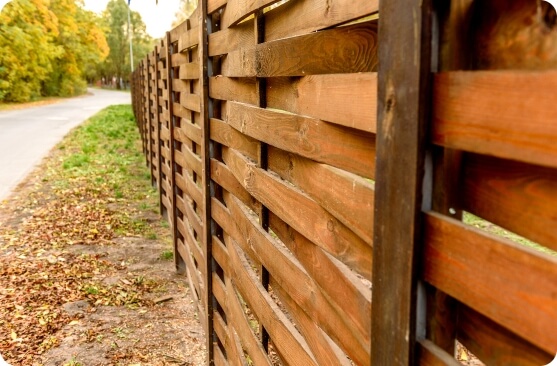
Horizontal Board Fencing
A horizontal board fence is a type of privacy fencing. The boards that comprise the fence section are placed next to each other horizontally and are backed by horizontal backer rails (also called stringers) for strength and durability.

Lattice Fencing
Lattice fences are constructed with wide top and bottom rails to provide stability to the lattice panels. Commonly found in residential gardens to mark a border or as a support structure for plants and vegetation, lattice fencing can also feature decorative posts and post caps or a garden trellis.
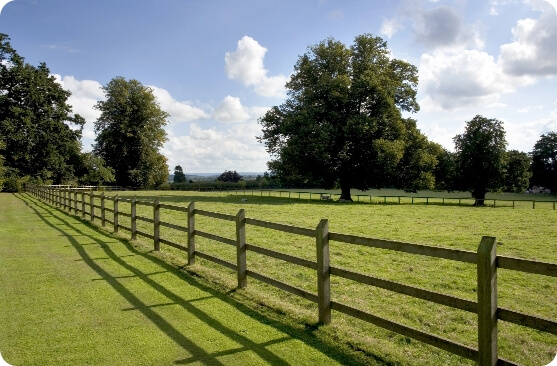
Paddock Fencing
Similar in appearance to a split rail fence, a paddock fence is generally used to contain horses and livestock. However, many homeowners opt to install paddock fencing because it offers security, while maintaining visibility. The addition of a welded wire mesh will also help contain smaller animals and pets.

Pet/Dog Fencing
Pet fences are specifically designed to help keep pets safe. Many homeowners require custom solutions so the fence fulfills its primary purpose. All pets are different and have different needs (for example, some dogs like to jump so a taller fence would be required etc.), so choosing the right fence for your pet’s safety is paramount.
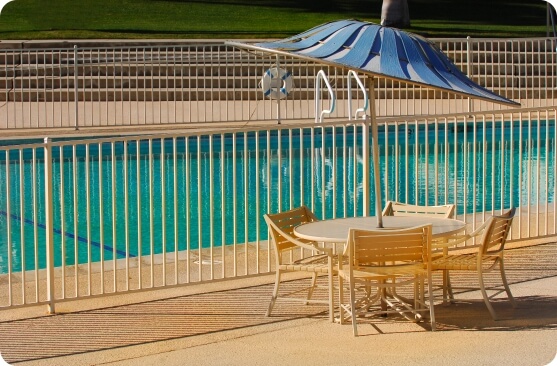
Pool Fencing
Avoiding a tragedy can literally be as simple as installing a pool fence. It is important that all pool fences comply with all local regulations. Outside of meeting code guidelines (such as picket spacing, gate closing, locking mechanisms, height etc.), a pool fence should not only enhance the beauty of your yard, but keep your family safe. A pool fence should also keep unwanted intruders from sneaking onto your property and into your pool.

Post And Rail (Estate) Fencing
An update on the classic split rail fence, post and rail fences are one of the most popular types of fences and are a go-to choice for many homeowners. Post and rail fences can serve a variety of functions and are made using a three rail design with three horizontal square rails connected to solid, square posts.
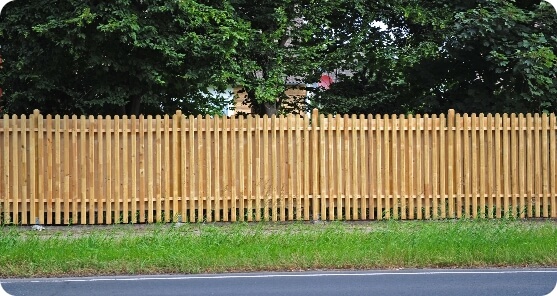
Spaced Board Fencing
In essence, a spaced board fence is a picket fence - but in lieu of pickets, the fence is built with evenly spaced flat edged boards./p>
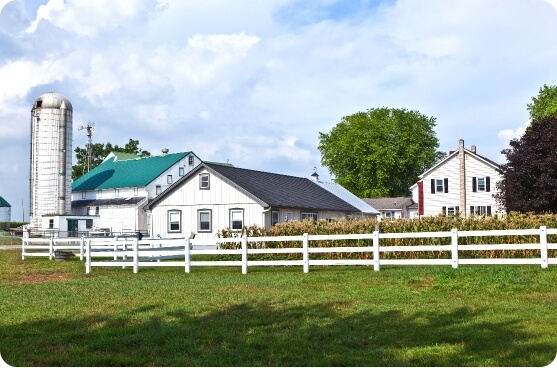
Split Rail Fencing
A split rail fence is constructed with rough hewn beams that are threaded through pre-cut holes in heavier, rounded posts. Traditionally split rail fences were used to keep livestock and animals contained. However, many homeowners opt to install a split rail fence because of its simple, rustic charm.
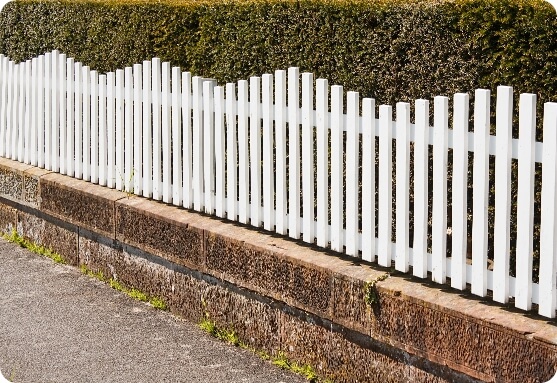
Stockade Fencing
A type of privacy fence, stockade fencing is constructed with flat boards placed side by side with pointed pickets (not all stockade fences have pointed pickets) for both security and style. Horizontal runners and sturdy fence posts provide stability.
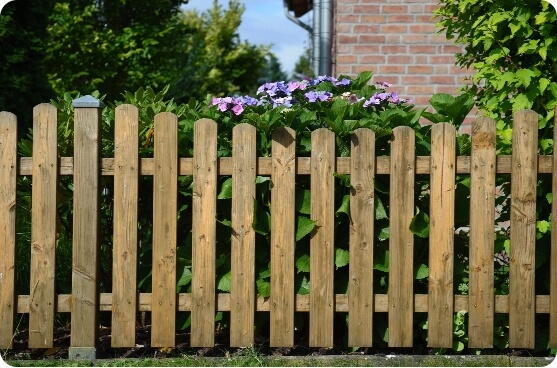
Vertical Board Fencing
A vertical board fence is a type of privacy fencing. The boards that comprise the fence section are placed next to each other vertically and backed by horizontal backer rails (also called stringers) for strength and durability. This type of fence is well suited for properties with steep grades.

Wire (Cattle) Fencing
The most basic of all fences, wire fences are used to keep livestock corralled and to mark boundaries. The fence is constructed using heavy gauge wire and posts for stability and durability.
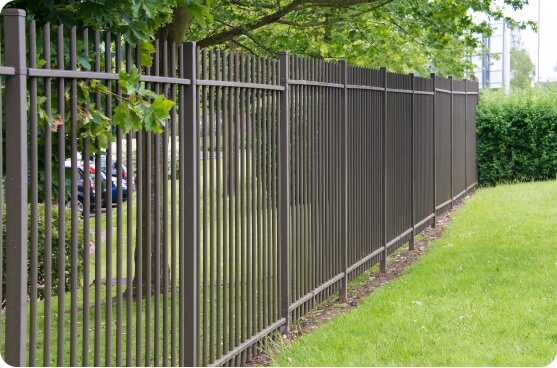
Wrought Iron Fencing
Wrought iron is one of the most durable and attractive types of fencing on the market. Modern wrought iron fencing is generally made from steel or aluminum. Its ornate designs are one of the reasons wrought iron fencing is considered the ultimate in fencing.
Fencing Materials
While wood and vinyl are the most common materials used in fencing, there are other options available. Ultimately the choice comes down to personal preference and budget restrictions.

Bamboo
Bamboo is quickly becoming a popular fencing material because it is one of the most environmentally friendly options available. Bamboo fencing is available in three options: live bamboo, cane bamboo and rolled bamboo.
Live bamboo tends to grow tall very quickly, which can provide the privacy you desire. Cane bamboo and rolled bamboo are generally linked together with poles for extra stability.
If you are looking for a sustainable fencing option, bamboo fences are increasing in popularity because it is easy to maintain and lasts several years. However, bamboo is considered a temporary fencing option because it doesn’t last forever. Real bamboo can last 2-3 years, and synthetic bamboo lasts between 5-10 years.
Pros:
- Eco-Friendly
- Low Maintenance
- Natural Aesthetic
- Privacy
- Fast Growing (live bamboo)
Cons:
- Temporary Solution
- Security
- Can Chip/Dent

Composite Fencing
The most affordable fencing material on the market, composite fencing is available in an array of colors, heights, designs and styles. Composite fencing is not as strong as wood or vinyl fencing, but is a budget-friendly option for anyone looking for weather resistant fencing.
Pros:
- Budget Friendly
- Variety (colors etc.)
- Weather Resistant
- Rust Resistant
Cons:
- High Maintenance
- Durability
- Heavy
- Curb Appeal (looks artificial)
- Prone to Dents/Cracks
- Specialized Installation
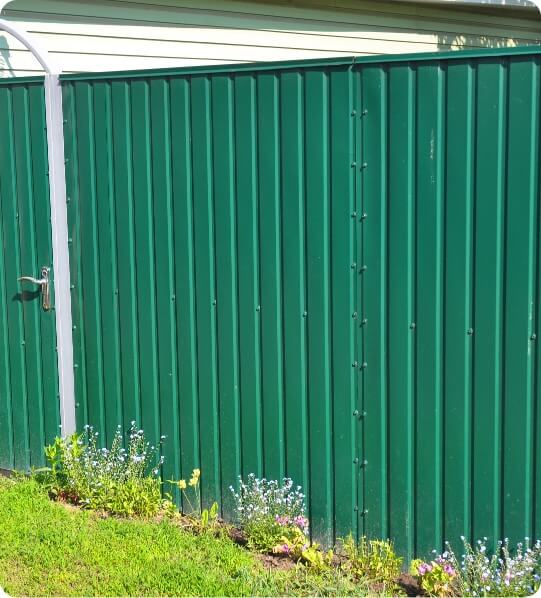
Metal Fencing
Typically made from aluminum or steel, metal fencing can add an elegant touch to a home, and when combined with other materials (such as wood or brick/stone columns). The most popular type of metal fencing is wrought iron, which is considered the premium fencing material because of its durability and aesthetic appeal.
The metal is typically manufactured in panels with vertical balusters and coated with a weatherproof rust-resistant sealant to create a sleek, modern design. While the upfront costs may seem high, the low cost of maintenance and durability should make up for it over time.
Pros:
- Multi-Function
- Security
- Curb Appeal (Excluding Chain Link)
- Low Maintenance
- Environmentally Safe
- Durable
Cons:
- Limited Privacy
- Expensive (Excluding Chain Link)
- Can Chip (when painted)
- Prone to Rust (when not properly maintained)
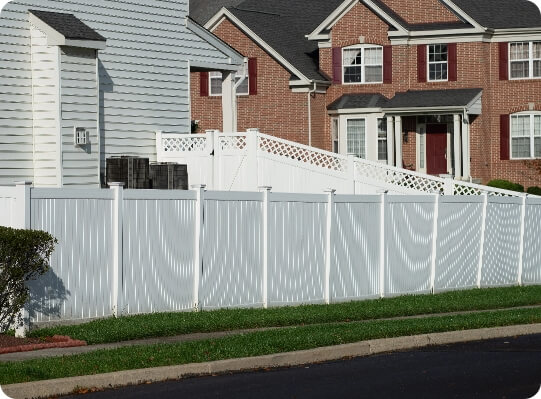
Vinyl (Synthetic/PVC) Fencing
Vinyl fencing is the most popular fencing material because it offers a high level of protection, strength and durability without the maintenance required of other fencing materials. Manufactured from synthetic or recycled plastics with additives specifically made to make it more durable, vinyl is one of the longest lasting fencing materials available.
Pros:
- Eco-Friendly
- 100% Recyclable
- Long Lasting
- Weather Resistant
- Waterproof
- Easy to Clean
- Durable
- Lightweight
- Low Maintenance
- Rust Resistant
- Variety
Cons:
- Specialized Installation
- Expensive
- Prone to Fading (must be a light color to prevent damage from UV exposure)
- Paint Resistant (vinyl fencing cannot be painted)
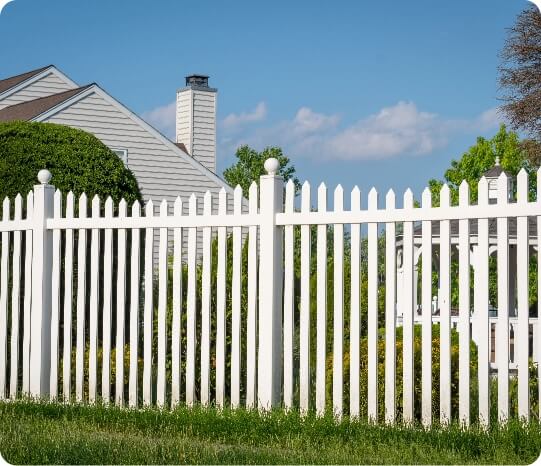
Wood Fencing
Wood has been used as a fencing material for centuries because of its traditional appeal and its warm and welcoming aesthetic. The durability of a wood fence is contingent on the type of wood used (such as cedar, redwood or pressure treated pine or fir), and is available in virtually any style. Since wood is generally thicker than most other fencing materials, it can add to a sense of security when properly maintained.
Pros:
- Durable
- Long Lasting (can last up to 20 years when properly maintained)
- Natural Aesthetic
- Versatile
- Variety (colors, styles, designs)
Cons:
- Expensive
- Maintenance (must be stained, painted and/or sealed)
- Susceptible to Rot (when not properly maintained)
- Can Crack/Split
- Prone to Pests (insects, termites etc.)
Fencing Terminology
Understanding the terms used in fencing will make it easier for you to ask the right questions and ensure that you are able to make an informed decision.
Aluminized
The woven steel wire on a chain link fence that is coated with aluminum before weaving.
Barbed Wire
Commonly used in agricultural fencing, barbed wire is constructed with sharp points and edges arranged in equal intervals.
Board
A component of a fence that is flat on both sides (versus a picket, which has a molded curve on one side). A board can feature a rounded, pointed or flat top.
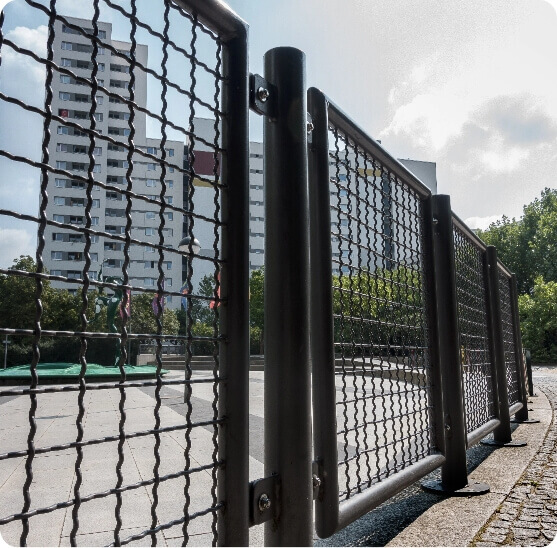
Bottom Rail
The horizontal part of the fence’s framework that runs horizontally along the bottom edge.
Brace Band
A strip of metal that fits around a post with a carriage nut and bolt to attach the rail to the end of the post.
Cantilever Slide Gate
A horizontal slide gate with no bottom or top support, counter-balanced to support the gate when closed.
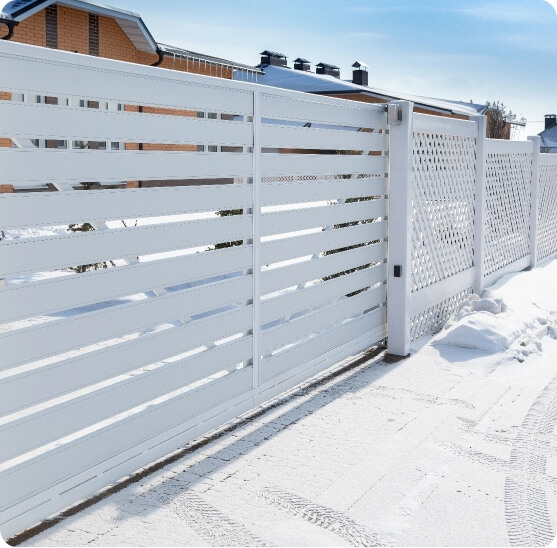
Center Stop
The device that holds the drop bar on a double gate.
Chain Link
A fence consisting of steel posts and chain link. The wires run vertically, and are bent and hooked together in a zigzag pattern.
Composite Fencing
Composite fencing is manufactured from recycled wood fibers and resin. It is generally produced to resemble wood (and lasts longer). Composite fencing is considered a ‘green’ building material, but it is not recyclable. The fencing comes as a system of posts and panels.
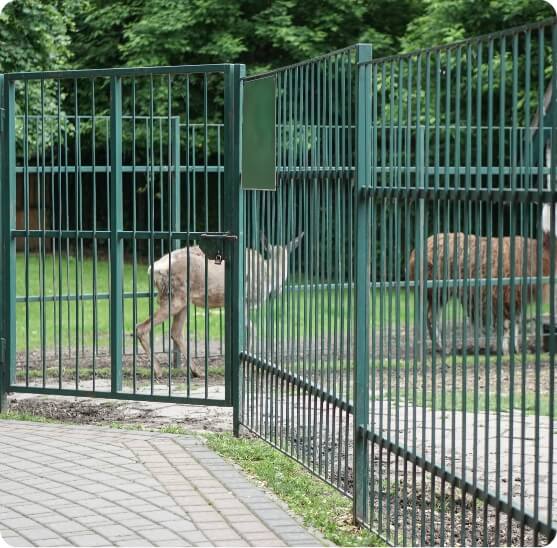
Corner Post
The post at the corner where two fences meet at a 90 degree angle.
Deer Fence
A fence, typically 7½ - 8 feet high, specifically designed to prevent deer from entering a property.
Diamond
The opening of the woven wires in a chain link fence.
Diamond Count
The number of diamond openings from one edge of the fence to the other.
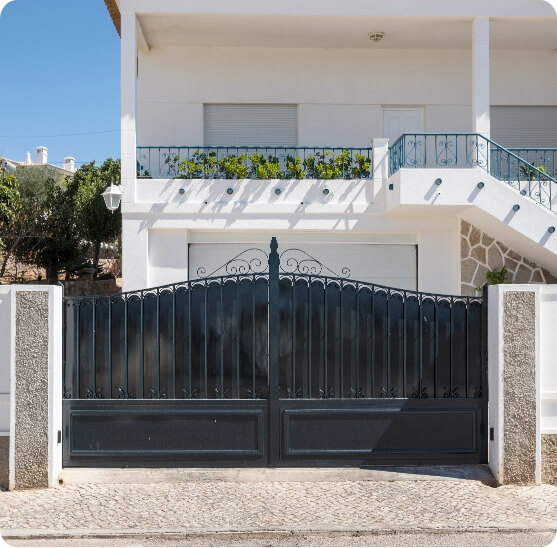
Double Swing Gate
A hinged gate with two panels commonly used on driveways or wide spaces.
Drop Bar (Drop Rod)
A part of a double latch device.
Electric Fence
A wire fence (enclosure) connected to a power source to enable an electric current to flow through it that prevents or discourages animals (such as pets) from escaping.
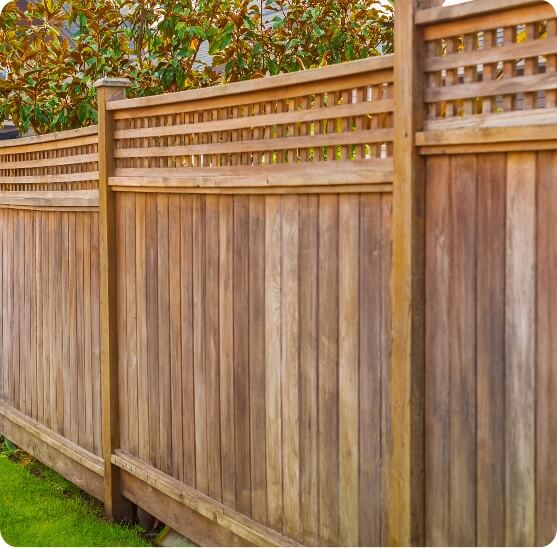
End (Terminal) Post
The part of a fence that marks the end of a fence line with holes on one side for attaching rails.
Fabric
Fencing material made from interwoven mesh, without knots or ties.
Fence Line
The position of the actual fence.
Fence Tie
Ties on a chain link fence that attach the fence to the line posts.
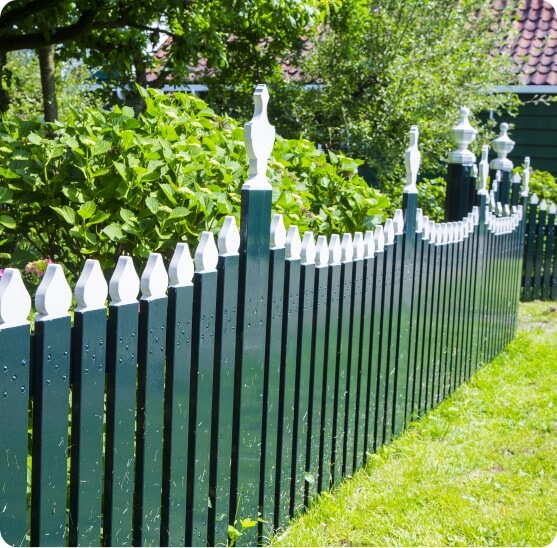
Frame Hinge
A fitting attached to the gate’s frame that enables the gate to swing open and closed.
Framework
The structure that holds the posts, top rails, braces and bottom rail.
Galvanized
A zinc coating applied to steel or iron to prevent rust.
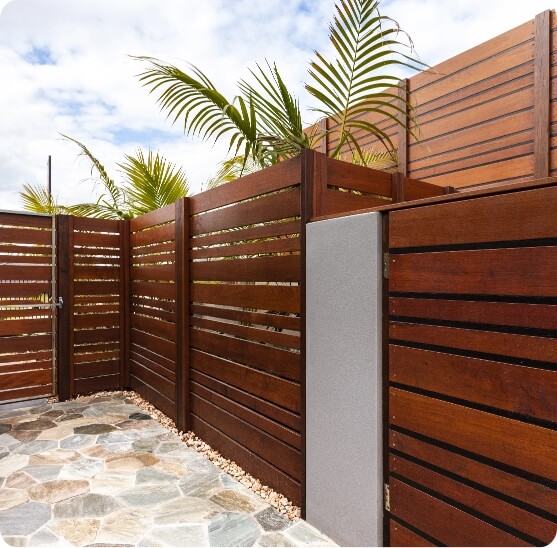
Gate
A structure that allows access into and out of a fence line and offers security for your fencing.
Gate Frame
The structural components of a gate.
Gate Latch
The device used to hold the gate in place when it’s closed.
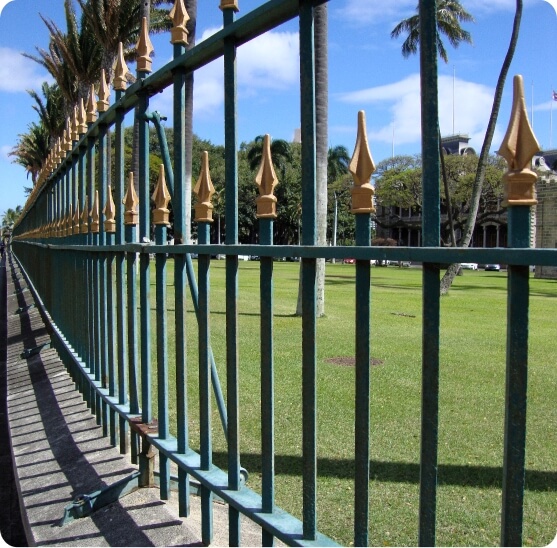
Gate Opening
The space between the gate posts.
Gate Post
The post that attaches the gate to the fence with hinges and latches.
Gauge
The diameter of the wire used to make the mesh (the thinner the wire, the higher the gauge).
Intermediate (Middle) Rail
The horizontal piece of framework that lays between the top and bottom of a fence.
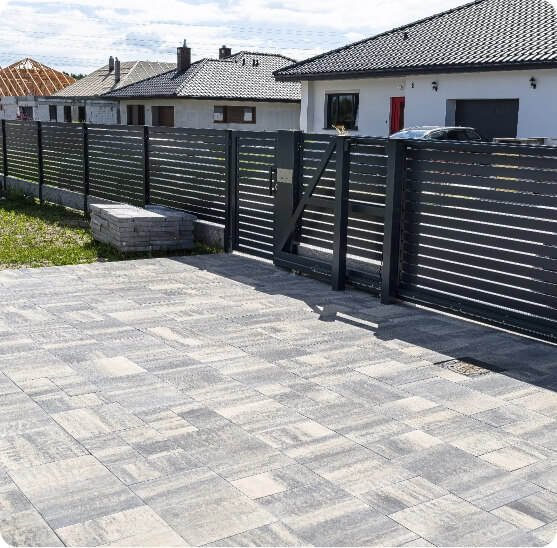
Knotted
Steel wired mesh knotted together both horizontally and vertically.
Lattice
Fencing made of prefabricated lattice panels.
Line Post
A post between the end (terminal) post that provides support for the fence structure.
Line Post Cap (Loop Cap)
A cap used to position the top rail on top of the line posts.
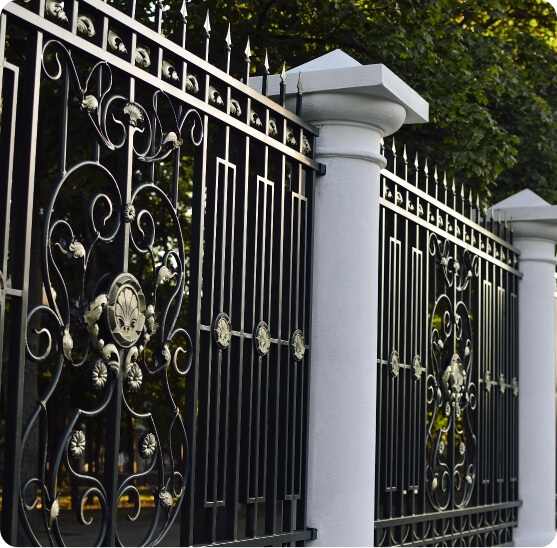
Mesh
Fencing made of horizontal and vertical wires.
Offset Hinge
A swing gate hinge that enables a gate to swing 180 degrees from its closed to open position.
Ornamental Fencing
A fence made of (or intended to mimic) a wrought iron fence.
Panel Clamp
A two-piece clamp with a carriage bolt and nut to secure panels together.

Perimeter Fence
A fence that runs around the outer boundary of a property.
Picket
A component of a fence with a signature molded curve on one side (versus a Board, which is flat on both sides). A picket can feature a rounded, pointed or flat top.
Picket Fence
A vertical fence with evenly spaced boards attached to the rails.
Pool Code Fence
A fence around a pool that meets local municipal requirements.

Post Cap
A fitting that covers the top of a fence post that can be decorative in purpose and/or act as a barrier to prevent water from penetrating the fence post.
Post Hinge
A fitting attached to the gate’s post to allow the gate to swing open and closed.
Post and Rail
A fence made from horizontal rails attached to vertical posts.
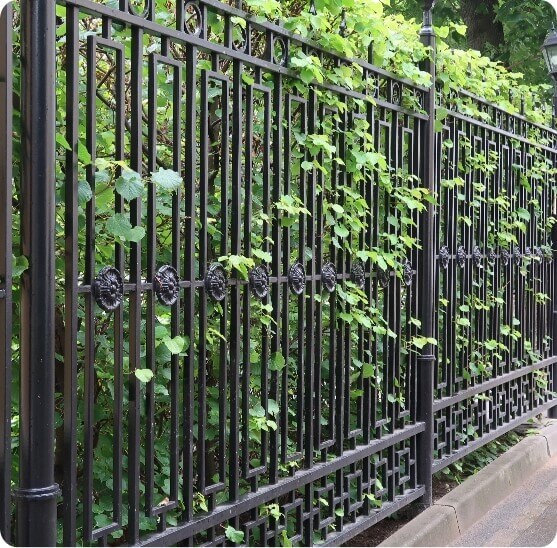
Post and Wire
A cost-effective alternative to a Post and Rail fence with wires connected to the vertical posts.
Privacy Fence
A fence intended to block views into an outdoor space with close-fitting vertical pickets.
PVC
The Polyvinyl Chloride coating on some fence materials.
Rail
The horizontal support where fence boards or pickets are attached.
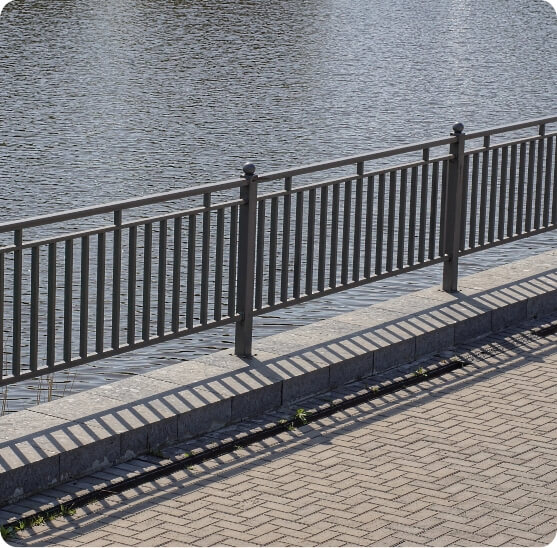
Rail Spacing
The distance between the rails.
Rail End
A cup shaped fitting that connects the top rail or brace to a post.
Raking
The installation of sections of a fence to enable the fence to follow the grade.
Section
The run of a fence between two posts.
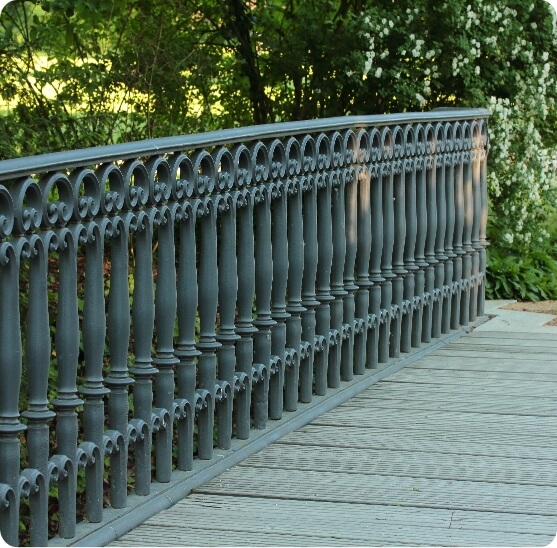
Semi-Private
A fence containing smaller spaces between the pickets.
Sight Board
Used on equestrian properties, the sight board is the top board between the posts intended to prevent a horse from running through a fence (horses are near-sighted and often cannot detect the height of a fence).
Single Swing Gate
A hinged gate with one panel.
Sleeve (Top Rail)
The fitting used to join two pieces of the top rail together.
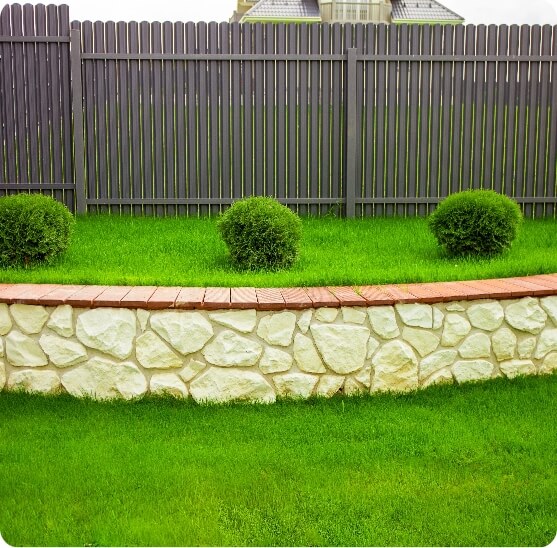
Sliding Fence Gate
Slides on a set of railings and opens parallel to the fencing (like a sliding glass or pocket door). Most sliding gates consist of a single panel to cover the opening. A sliding fence gate does not require the clearance of a swing gate, but it does require room for the panel to slide open.
Split Rail
A post and rail fence (typically made of wood) with two or three horizontal rails that fit into a notched post.
Stair Stepping
The method used to install a fence with uniform sections on a steep grade that creates a stair/step-like appearance.

Stretching
The act of pulling tension at the end of mesh to ensure it fits/hangs properly between terminal posts.
Stringer
Horizontal backer nails.
Swage
The formed end of a top rail that will fit into and join another piece of the top rail.
Gate Swing
Swings open and close like a door. The gate can lock, swing in one or both directions and can be installed with virtually any style of fence.
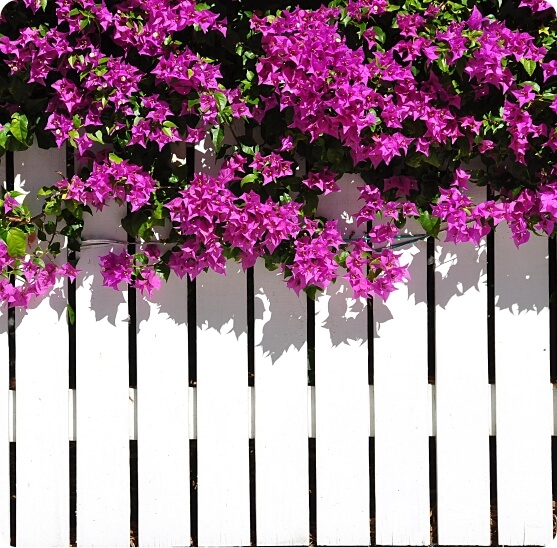
Tension Band
A strip of metal that fits around the terminal post on a chain link fence secured with a carriage bolt and nut to attach the tension bar to the post.
Tension Bar
The bar to attach the mesh to a terminal post with a tension band or post connector.
Tension Wire (Cool Spring Wire/Coil Wire)
A wire typically used along the top of a chain link fence in place of a top rail, or along the bottom for added security.
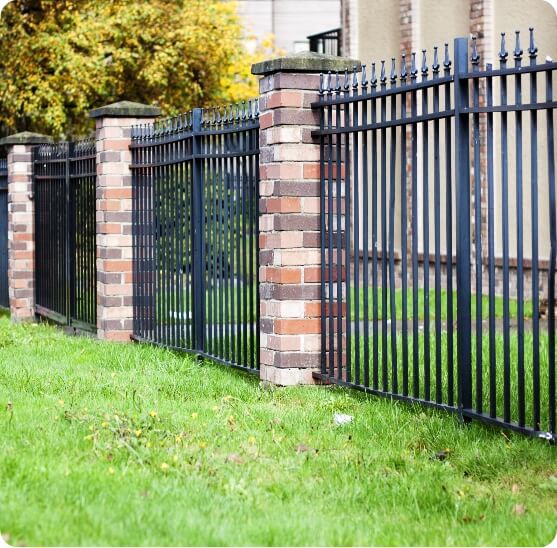
Terminal Post
The load bearing post of a section of fencing (can be a corner, end, or gate post).
Tie
A wire or clip used to attach the mesh to the top rail and line posts.
Top Rail
The horizontal piece of framework that runs from terminal post to terminal post on top of the line posts.

Truss Rod
A tension rod used for bracing in gates and at terminal posts.
Turnbuckle
A device used to tighten with an adjusting nut and truss rod.
Woven Wire
Fencing made of smooth horizontal wire held together by vertical wire (also called ‘stays’). The horizontal spacing is closer at the bottom and wider at the top.
Considerations
Before investing in a new fence, it’s important to take the time to consider several factors such as:
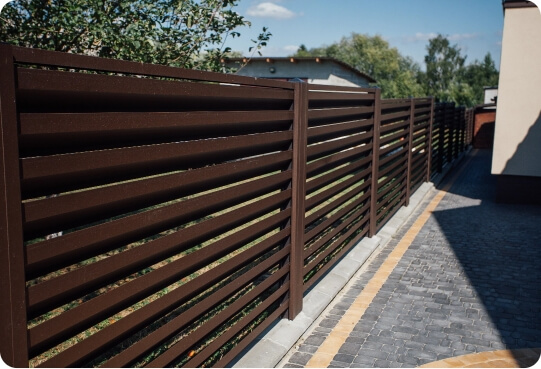
Building Permits
Building codes and zoning ordinances may restrict the size, style and location of your fence. Honey Do Men handles this process for our customers because we are intimate with the requirements in each area we serve which eliminates the worry about getting it right.
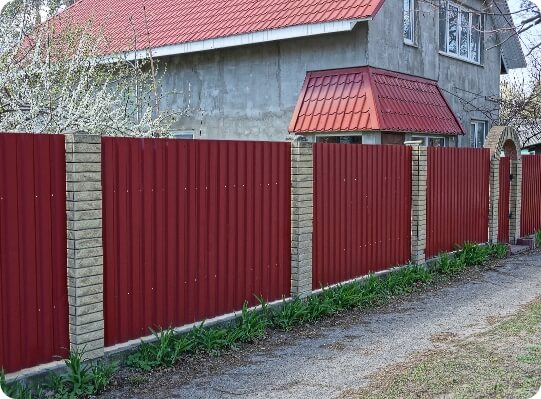
Functionality
Whatever style of fence or gate you choose, it should be able to provide the functionality you need. For example, if you are looking for maximum privacy you’ll want to look for a privacy fence that is tall enough with limited openings for people to peek through.
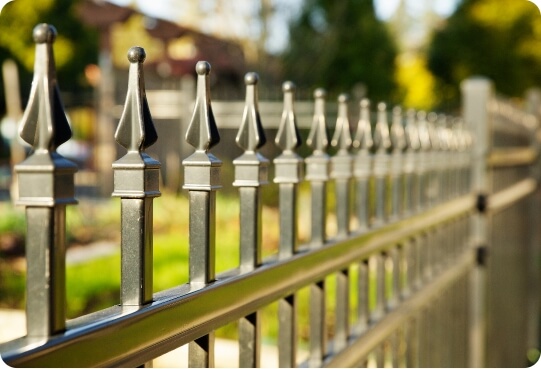
Homeowner’s Association (HOA)
Before investing in a new fence, check with your HOA (if applicable) to ensure there are no specific restrictions or design requirements. You’ll need to also ensure that your fence lies within your property lines in order to prevent future issues.
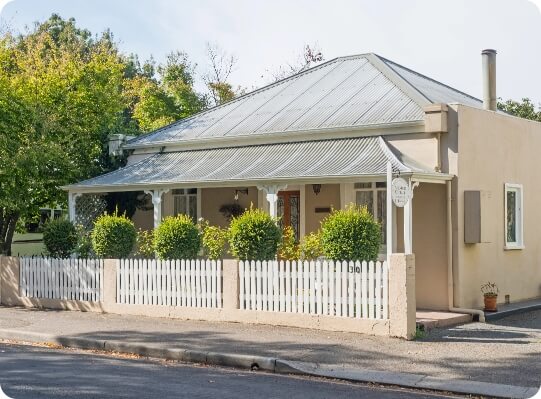
Neighbors
If possible, discuss what you are planning to do with your neighbors. There are times when neighbors who may have considered a similar project, and as a result, share the costs of a dividing fence.

Cost
The price of a fence is determined by the type of fence, the materials used, and the amount of fencing materials required for the project.
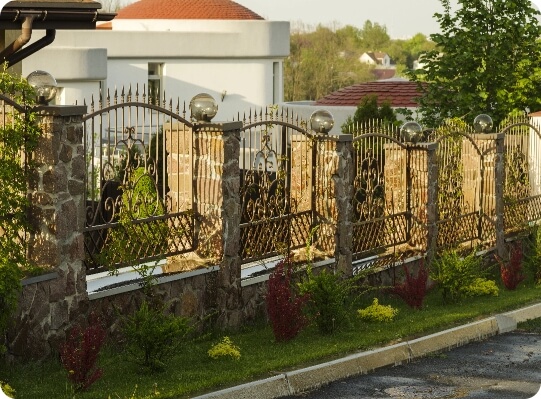
Purpose
Knowing the intended purpose of the fence you are looking for will make the decision process quicker and much easier. For example, if you are looking for a way to help keep kids and pets safe, a wooden split rail fence is not going to work for you. If you are seeking privacy, a chain link fence can be eliminated from your list.
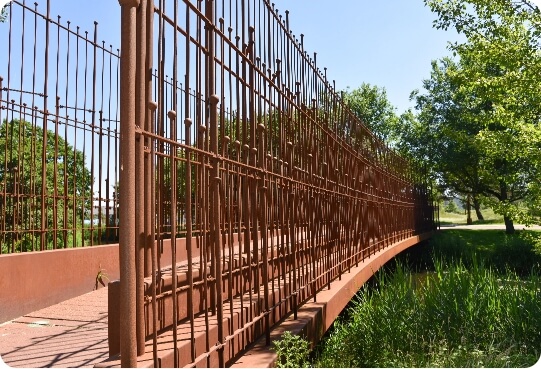
Utility Lines
Before installing a new fence, it is essential to determine where any underground utility lines (gas, water, waste and power) are located. In general, utility companies will come to your home to mark out the lines for free.
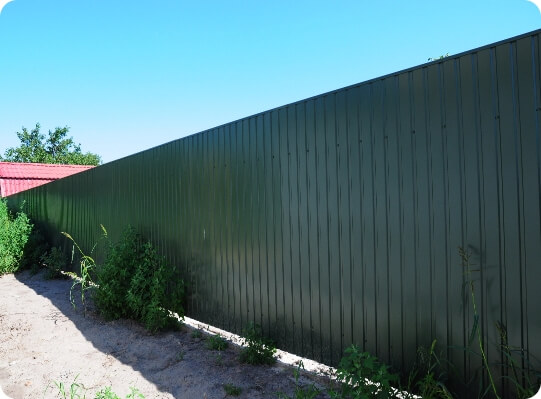
DIY Project
The skills required to install a fence vary greatly depending on the type of fence and the quality and quantity of materials used. If you attempt to do the project yourself and change your mind, Honey Do Men can help finish up the project for you.
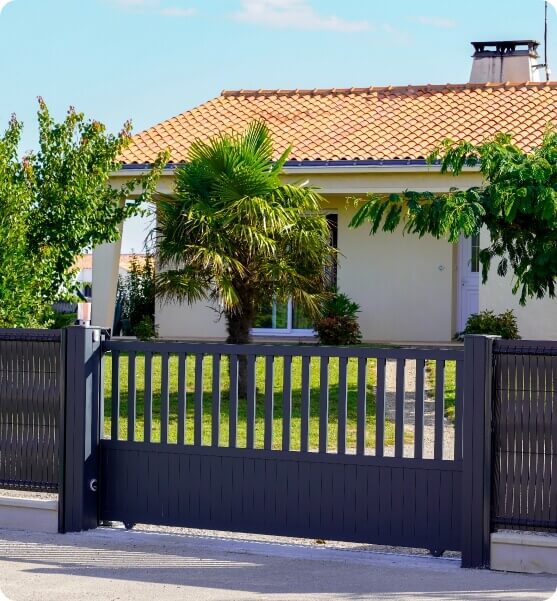
Gates
Fencing gates are a vital component of a fence because they provide an entry and exit to the area the fence surrounds. As an added layer of protection, a gate can provide you full control of the access to your home and property.
Gate widths will vary depending on what they will be used for and where they will be located. For example, if you are intending to get a lawnmower through your fence gate, then the gate should be at least wide enough to provide access for your lawn equipment. Smaller gates can be as thin as three feet, and driveway gates can exceed ten feet to allow access for vehicle traffic without risking an accident (such as hitting the side).
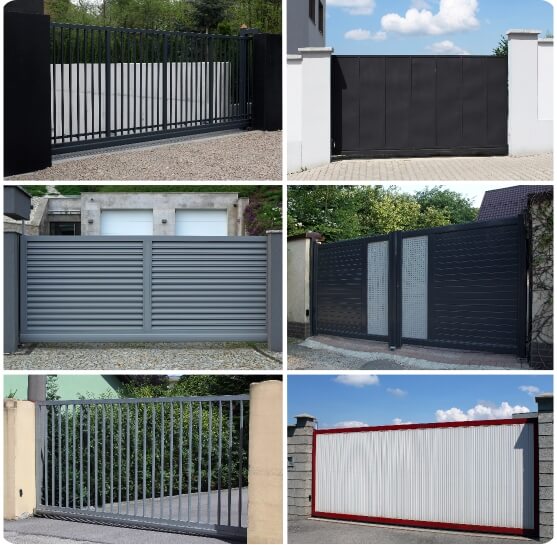
Types Of Gates
Like fencing, gates are available in a variety of styles and designs. The type of gate you choose is dependent on the space it will be located. Your gate should enhance, not detract from your home’s appearance.
In General, Gates Fall Into One Of Two Categories:
| Swing Gates | Sliding Gates |
|---|---|
| Requires room to open and close. | No front clearance needed although it needs space to allow the gate to slide. |
| Hardware consists of simple hinges and latches. | Hardware is generally more elaborate (such as a track) to operate. |
| Prone to damage in high winds and extreme weather. | The inherent structure provides stability, so it is less likely to become damaged in high winds or extreme weather. |
| Should not be located on a hill/slope. | Works well on a hill/slope. |
Your gate should match the fence’s style and color (unless you are looking to create an accent or highlight specific features). In addition, the gate’s hardware (knobs, latches, hinges etc.) are available in many styles and designs in order to blend in with your gate/fence’s overall aesthetic.

Automatic (Electric) Gates
An automatic gate doesn’t require anyone to physically open and close it. Automatic gates are generally connected to the home’s power line and often use batteries to operate continuously. An automatic gate allows access via a keypad, button or sensor.
Pros:
- Security
- Controlled Access (can assign a passcode or use a card reader)
- Curb Appeal
- Low Maintenance
- Increased Home Value
- Inexpensive to Operate
Cons:
- Expensive
- Costly Repairs
- Relies on Electricity (if the power goes out, the gate will not work)
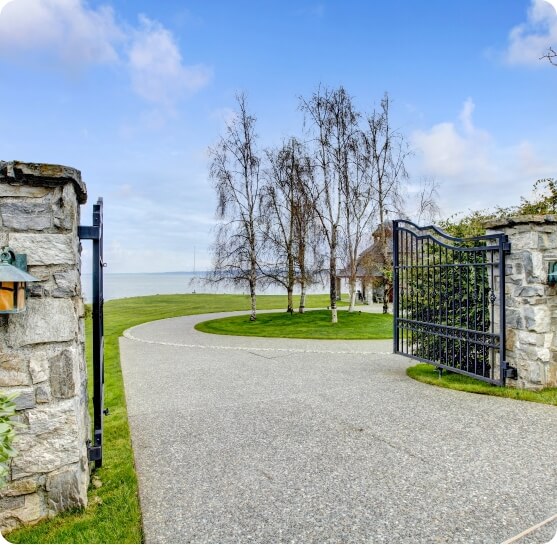
Driveway Gates
A driveway gate can be manufactured with virtually any material, but they are typically constructed with aluminum for its durability and strength. Driveway gates often include ornamental elements and masonry accents (such as side columns made of brick or stone).
Driveway gates can operate manually or automatically, depending on individual preference and can be designed with intricate patterns and finishes.
Pros
- Curb Appeal
- Security
- Controlled Access
- Easily Customized
- Low Maintenance
Cons
- Expensive
- Specialized Installation
- Requires Specialized Hardware
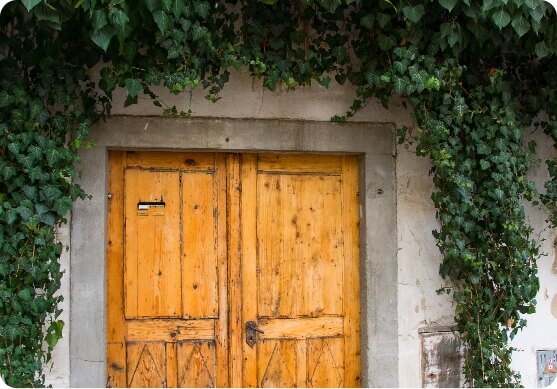
Pivot Gates
A gate that opens vertically to allow for vehicle traffic.
Pros:
- Saves Floor Space
- Security
- Low Maintenance
- Rust Resistant
Cons:
- Expensive
- Requirements (must be large and strong enough to function properly)
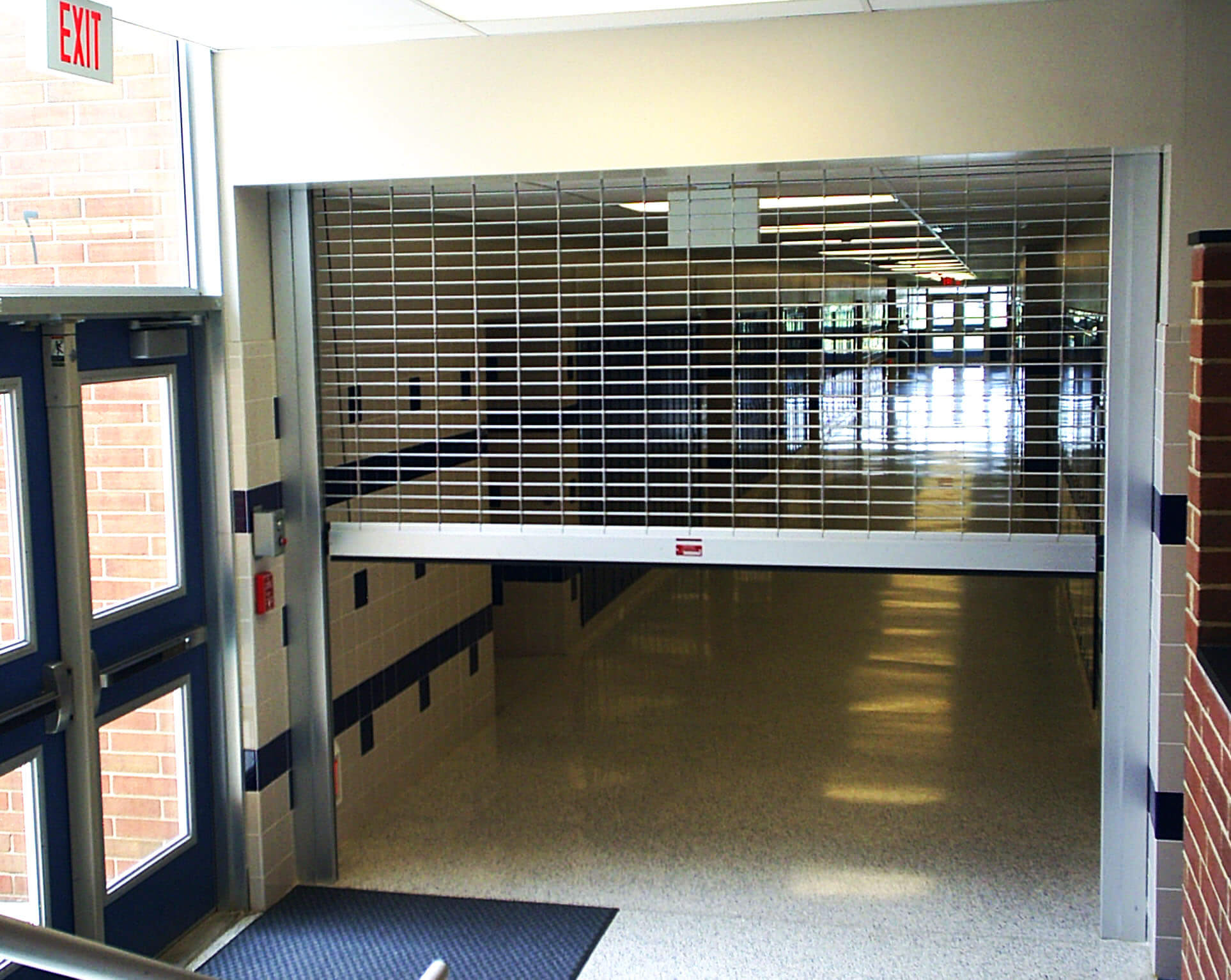
Retractable Security Gates
Retractable security gates work best on areas with limited floor space (the gate rolls up). This type of gate is manufactured specifically for maximum security and can be found on many commercial buildings.
Pros:
- Security
- Budget Friendly
- Lightweight (versus other types of solid gates)
- Operation (can open full or partially)
Cons:
- Difficult to Clean
- Prone to Damage (when not properly maintained)
- Requires Regular Lubrication
- Maintenance (must be painted regularly because the gate is exposed to the elements)
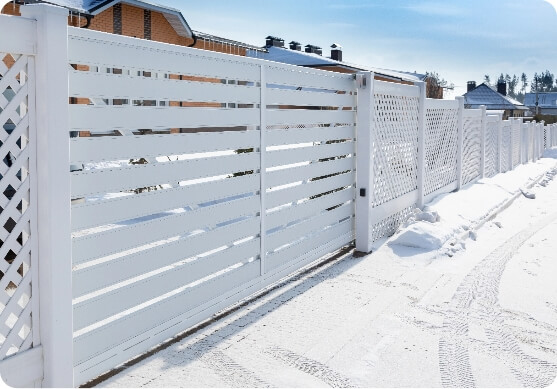
Sliding Gates
As the name implies, a sliding gate opens sideways (horizontally) which makes it a great option for areas with limited space.
Pros:
- Security
- Wind Resistant
- Curb Appeal
- Durable
- Limited Space Required
Cons:
- Noisy (because there are more moving parts)
- Maintenance
- Expensive
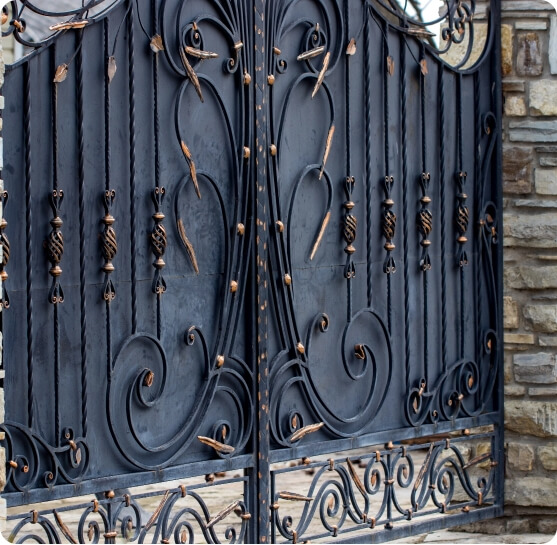
Swing Gates
In the past, swing gates were available in very limited options. Today, there are a wide array of styles and designs available in virtually any material from simple to ornate.
Swing gates require more space on the ground to open, and can consist of single, double or bi-fold panels depending on its location and intended use.
Pros:
- Low Maintenance
- No Motor or Electrical Components
- Access (can open and close in either direction)
- Budget Friendly
Cons:
- Susceptible to Wind Damage
- Security
- Requires Ground Space

Turnstile Gates
Commonly found in commercial settings, turnstile gates are used to control access to and from a specific location. Many businesses install turnstile gates in order to allow only those with appropriate credentials to enter the building.
Pros:
- Security
- Card Readers (can control access)
- Budget Friendly
- Indoor or Outdoor Use
Cons:
- Narrow Width
- Slows Traffic
- Can Lock Up
- Noisy
Fencing & Gates
Honey Do Men will work with you every step of the way to create the fence you’ve been looking for. We will help you determine the ideal height for your fence, the style you desire and will ensure that your fence conforms to all local codes and regulations.
We have the skills, experience and expertise in all types of fencing and have been at the forefront of fence installation for over 20 years. We have set the benchmark in our commitment to quality fencing solutions, including maintenance, repair and installation.
Call us today and see why so many homeowners choose Honey Do Men for their fencing needs.
TESTIMONIALWhat Our Customers Say About Us
Common Fencing & Gates Questions
Maintenance requirements vary depending on the fencing material:
- Wood:
- Regularly inspect for rot, insects, and damage.
- Repaint or stain every few years to protect against weathering.
- Replace damaged or rotting boards promptly.
- Vinyl:
- Clean with soap and water periodically to remove dirt and mildew.
- Inspect for cracks or damage, especially after severe weather.
- No need for painting or staining.
- Chain Link:
- Check for rust and apply rust-resistant coating as needed.
- Repair bent or damaged links and posts.
- Trim vegetation around the base to prevent damage.
- Aluminum:
- Clean with mild soap and water to maintain appearance.
- Check for loose screws and brackets, tighten as necessary.
- Inspect for bends or damage after storms.
- Wrought Iron:
- Regularly inspect for rust and corrosion, sand and repaint affected areas.
- Clean with water and mild detergent.
- Apply a protective sealant every few years to prevent rust.
- Composite:
- Clean with soap and water to remove dirt and debris.
- Inspect for damage and repair or replace as necessary.
- Requires minimal maintenance compared to wood.
To Schedule A Complimentary Consultation With One Of Our Specialists
Give us a call today.
Contact Us
